Conflict brings out genius. Genius, however, looks very similar to madness.
Wars are won through tactics, which are usually dependent on technology. It’s is only natural then that all sides in an armed conflict would race to build some sort of super weapon in the the hopes of turning things in their favor. However, most plans look better on paper and instead of having an array of death lasers we’re left with junk like this.
1.
The Paris Gun
Scenario: you wake up one morning, look out your window and see this staring back at you. What do you do?

For starters, you should probably change your underwear.
The Paris Gun was a German weapon of World War One. Defined as a super heavy field cannon, the gun hurled a two-hundred and ten pound shell over eighty miles through the air. The shells could climb so high that they reached that stratosphere, a record for the time.
The gun, while incredibly intimidating, wasn’t as successful as the Germans had hoped. Accuracy was a huge problem and success was only guaranteed when firing upon city targets (because honestly, how can you possibly miss a city?) What’s more, the shells were fired with such velocity that they’d damage damage the cannon itself, requiring each round to be wider than the previous.
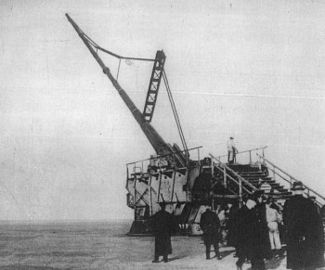
Initially housed on a mountain side facing Paris, the weapon fired less than four hundred rounds and was ultimately dismantled as the war was coming to a close. It’s most successful attack was a single shot that struck St-Gervais-et-St-Protais Church, collapsing the roof, killing eighty-eight and wounding sixty-eight. The attack took place on Good Friday, but those in attendance most likely thought otherwise.
2.
The Puckle Gun
Despite the silly sounding name the Puckle Gun was something to be feared, at least in its time. Invented by James Puckle, the gun was mounted on a tripod, though the gun itself resembled a large revolver. Considered by some to be the first machine gun, it was capable of firing up to nine rounds a minute. Not terribly impressive by today’s standards, you need to take into consideration that this was the day of the musket, where having to reload on the battlefield greatly increased the odds of someone else shooting you with a musket. According the Puckle the weapon was best used on a ship and was excellent at preventing boarding.
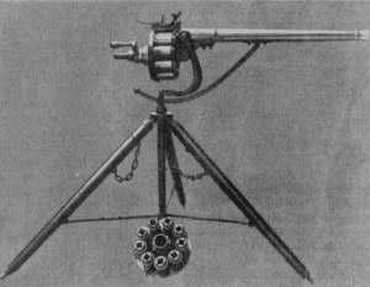
Perhaps the most interesting aspect of the Puckle Gun are two of its variants. One, designed for strictly Christian enemies, fired the standard round bullet. The other, designed for use against Muslim Turks, fired square bullets, which were more painful. This was intended to show these enemies the benefits of being Christian, something one often finds themselves wondering while they themselves are nursing an oddly-shaped gunshot wound.
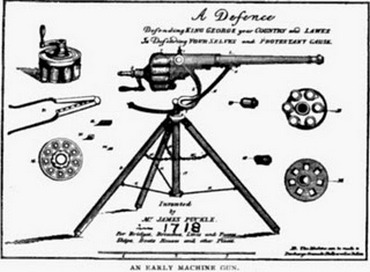
What would Jesus do indeed.
The weapon failed to catch on due to the complicated components needed to make it.
3.
The Kaiten
A member of the ever popular suicide craft class of weapons, the kaiten was essentially a manned torpedo used by the Japanese in World War II. When war progress was deemed unfavorable in 1943 the concept of suicide crafts were born. The kaiten was the second most successful behind the kamikaze plane.
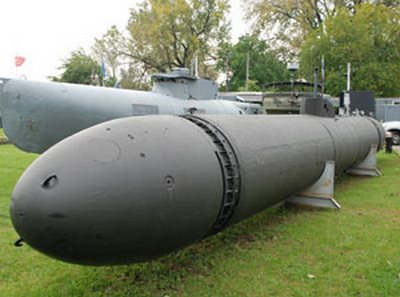
The kaiten was essentially a torpedo with room for one to two pilots to control and navigate the craft. Each submarine could potentially carry six to eight kaiten, and each kaiten had a 3,400 lb warhead, which is devastating to say the least.
What makes the kaiten so bizarre is that it never really seemed to work. Six different types were designed with only the first seeing combat (and allegedly only one hundred of the produced units were used). Their top speed was only forty miles per hour and the craft was subject to leaks. In general the kaiten was less effective than the torpedo it was modeled after: in all, kaiten attacks killed less than two-hundred Allied troops. Meanwhile, eight-hundred Japanese soldiers were lost between kaiten pilots and crafts sunk while launching kaiten attacks. Due to their low speeds kaiten were especially susceptible to depth charges.
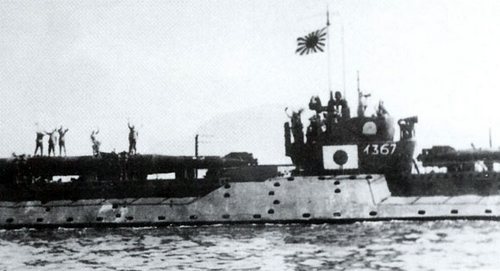
4.
The Whirlwind Cannon
The Third Reich had thing for designing fantastic weapons. From the ocean boiling space mirror to the aptly named Goliath Tank Buster, the Germans wanted to send a message and that message was “We are excellent at wasting money.”

Much of the money went to snappy headshots.
The Whirlwind Cannon was the brainchild of Austrian scientist Dr. Zippermeyer. Considered a bit of a crackpot, Zippermeyer theorized that a large enough “arm” could eject compressed bursts of air to knock aircraft out of the sky. In testing a small prototype was able to destroy planks up to two-hundred yards away. Considering this all the testing he needed to dub his notion correct, he went ahead with designing the real deal. With a barrel twelve meters long, a nozzle another thirteen meters long, and a range of two-hundred meters, the Whirlwind Cannon was a beast in its own right.
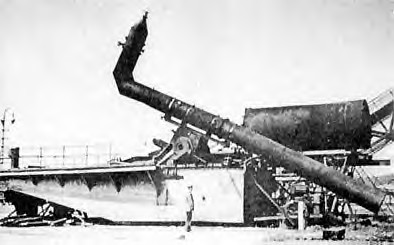
Rawr.
Sadly, it simply didn’t work. There was difficulty in making the shots effective as the reached higher altitudes. What’s more, the aerodynamics of an aircraft it would be attacking would make hitting them significantly more difficult than anticipated (and that’s to say nothing about the fact that these planes would be moving). The Whirlwind Cannon had the potential to win the war for the Axis Powers but sadly that wasn’t meant to be because the Allies weren’t comprised of small wooden planks.
5.
Project Habakkuk
The German u-boat posed a huge threat to the Allies in World War II in that it could move freely beyond the range of most Allied aircraft. To counter this the British had a plan. A plan as cold as iiiiiiiiiice.
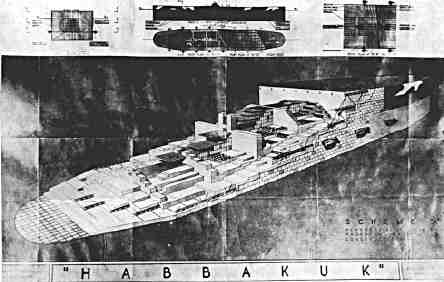
Geoffrey Pyke sought to make an aircraft carrier of ice to save aluminum and steel for other projects. Once constructed the ship could rest easily at key points in the Atlantic to allow sub hunting aircraft to refuel and relaunch. The army latched on to the idea and began creating such a carrier of their own. However, forgetting that summer was a thing, the project melted and everyone involved suddenly felt very stupid.
The project managed to survive thanks to Pykrete, a mixture of water and wood pulp that was stronger than natural ice and melted at a slower rate. However, in using Pykrete the process of making a ship of ice became even more complicated; the ship’s surface would need to be covered in insulation and the inside required a complex refrigeration system to prevent the effects of plastic flow.

Eventually the whole project was scrapped. First, creating enough Pykrete to construct multiple ships would have greatly affected paper production. Second, Portugal opened its airfields to the Allies, allowing them to hunt u-boats further into the Atlantic. Finally, someone realized how incredibly impractical a giant boat made of fake ice was.
6.
The Pigeon Guided Missile
Weaponizing animals has a rich history of not really working. The pigeon guided missile, however, did manage to work, and may have actually been implemented had it not been for standard electronic guidance systems.

Inside the weapon is a pigeon and a projected image of a target. Once trained to recognize the target the pigeon is then trained to guide the missile to the actual target with four levers (left, right, up, down). Trainers would reinforce this behavior when the pigeon was able to guide the weapon and center it by feeding them corn and seeds.
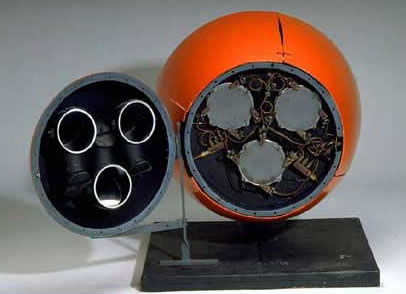
The project was originally proposed by famed behavioral psychologist B. F. Skinner, the same man who invented the air crib. From raising kids to killing with the awesome power of birds, the man had your back.
Written by NN – Copyrighted © www.weirdworm.net
Image Sources
Image sources:
- – The Paris Gun: http://t3.gstatic.com/images?q=tbn:ANd9GcT8APLqp3djpK_0iIBSPtFbowpfQXPL-tXyAU_5E22zi61yRQlm&t=1
- – The Puckle Gun: http://www.ctsportsmen.com/news/PuckleGun.jpg
- – The Kaiten: http://www.militaryfactory.com/ships/imgs/kaiten.jpg
- – The Whirlwind Cannon: http://ehgazette.blogs.brynmawr.edu/files/2010/01/adolf-hitler.jpg
- – Project Habakkuk : http://farm4.static.flickr.com/3303/3544274274_a6de50d938.jpg
- – The Pigeon Guided Missile: http://img.uphaa.com/uploads/928/pigeo-uphaa.jpg







